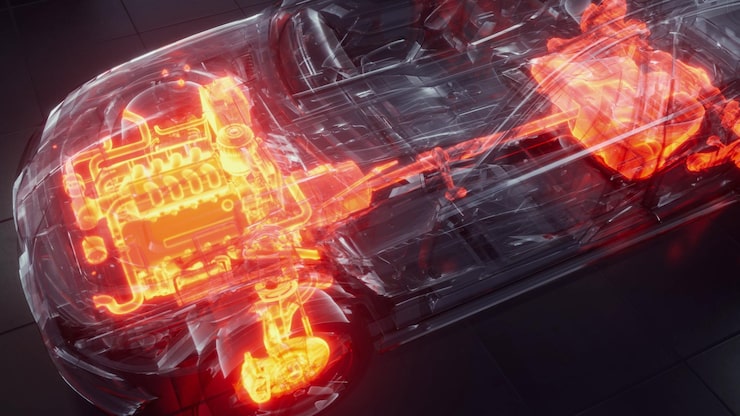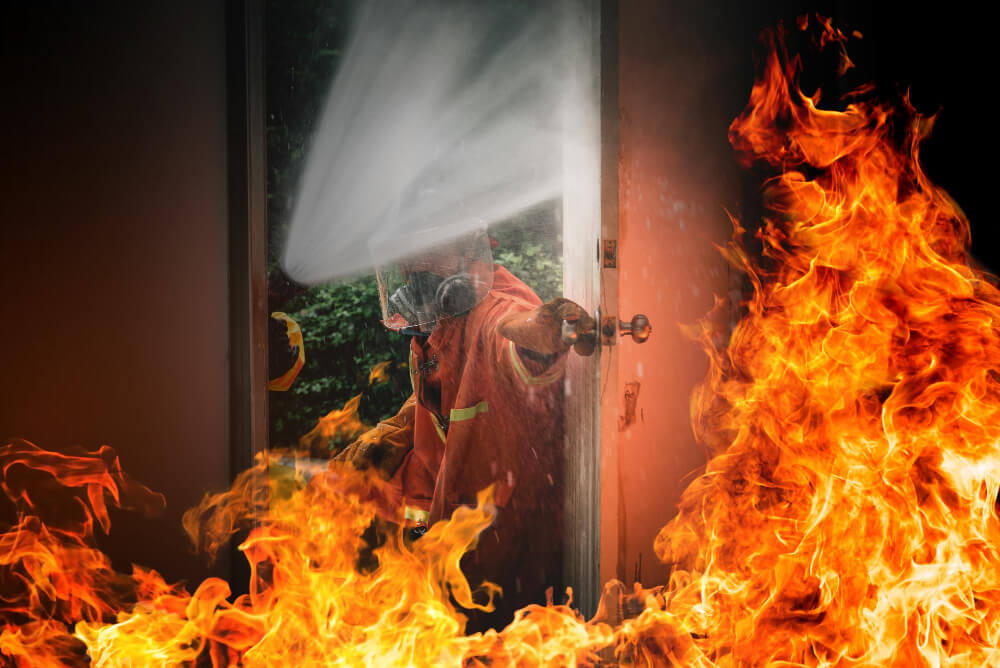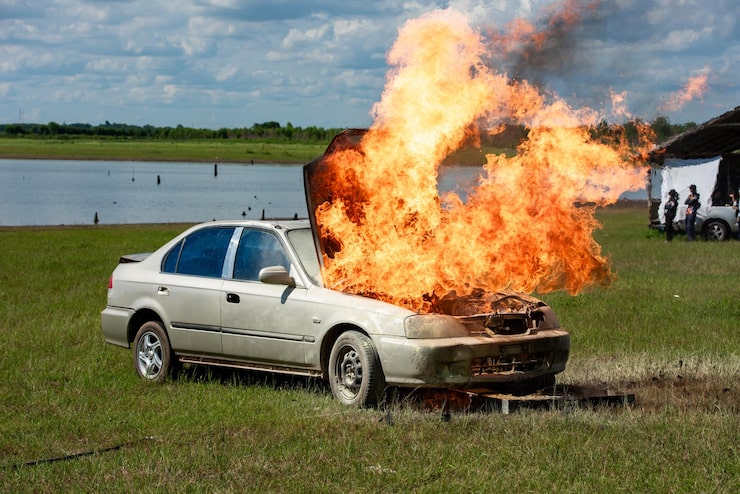
Future-Proofing Cars with Fire Safety Science
In mobility, vehicle fire supression is moving from reactive devices to proactive safety intelligence. Years of testing engine compartments, battery modules, and sensor arrays demonstrate that high-fidelity detection combined with automotive thermal management can prevent small anomalies from escalating to a full fire, long before occupants feel heat (NFPA Journal, 2024; Fire Safety Journal, 2024; NTSB, 2020–2025). In this change, the devices, for example, Auto Burn Stop, show how the embedded algorithms, distributed tubing, microprocessor control, and GSM/GPRS alerts can translate science into practice, in reality. For manufacturers and fleet operators, vehicle fire suppression increasingly intertwines with automotive thermal management across all levels: sensor fusion, materials selection, enclosure design, cloud-based telemetry. Competitive leaders bake Auto Burn Stop into validation loops and predictive models – firmware for automotive fire suppression informs automotive thermal management maps, and vice versa. Having treated this as infrastructure, not as an add-on, leaves organizations at a remove. This is the reason vehicle fire suppression, vehicle thermal management, and Auto Burn Stop are presented in this blog as a future peak of industry.
Sensor Fusion Redefines Early Detection
Prompt detection relies on the integration of infrared, acoustic, gas, as well as microthermal data streams into classifiers adapted for onboard vehicle fire suppression (Frontiers in Physics, 2025; MDPI Sensors, 2025). In the images, thermal fingerprints are recorded by infrared arrays, while the mics hear venting or arcing, and the electrochem sensors read vent-gas precursors, all elements of this constellation of increasing awareness, and each feeding automotive thermal management decisions milliseconds before flame (ScienceDirect, 2025; AtLeast, 2025; MDPI Fire, 2025). In practice, Auto Burn Stop operates by coupling microprocessors with networked sensors in order to calculate risk in real time and to effect interventions. This allows vehicle fire suppression systems to have the accuracy not to false alarm but also to act with determination. This identical sensor stack forms the basis of automotive thermal management, where algorithms modulate loads, open louvers, or pre-cool regions according to the probability of an anomaly. Deployed across hundreds of thousands of vehicles, Auto Burn Stop generates datasets that perpetually retrain vehicle fire suppression set points, as digital twins predict how to optimize automotive thermal management in worst-case scenarios (NTSB safety studies; WSP EV fire study, 2025). In essence, where sensing marries inference, vehicle fire suppression and automotive thermal management become a unified, predictive layer, and Auto Burn Stop is designed specifically to complete that loop.
Targeted Agents, Piping, and Actuation Engineering
There’s a science to choosing agents and routing them precisely that forms the core of vehicle fire suppression. Engineered piping surrounds hot spots, electronically actuated valves meter the discharge, and all of this reduces agent mass even while increasing coverage uniformity, essential for automotive heat soak management. Auto Burn Stop combines trunk-mounted tanks, microprocessor-driven valves, and sensor-verified discharge to ensure the correct agent to the correct fire class flows at the correct flow rate. Studies show the use of nitrogen flooding for battery packs, water mist for convection break, and the application of advanced aerosols and encapsulated retardants to control re-ignition (IRJMETS, 2024; Fire Technology/ScienceDirect, 2025). By validating the type of fire, vehicle fire suppression systems eliminate the possibility of cross-contamination or chemicals that are ineffective, while automotive thermal management systems prevent local hot spots after discharge by monitoring thermal gradients. In conclusion, Auto Burn Stop links discharge profiles with classifier confidence, meaning that progression of vehicle fire suppression maps can be iteratively trained. This engineering approach integrates agent yield, droplet spectrum, and venting paths as participant variables, interacting in automotive thermal management, so that when an Auto Burn Stop is actuated, temperatures recover rather than suffer thermal shock. Such feedbacks make vehicle fire suppression predictable and reproducible, core prerequisites for scaled deployment in contemporary platforms (ScienceDirect reviews, 2024–2025).
Connectivity, Telemetry, and Response Coordination
Connectivity now factors into the effect of in-vehicle fire suppression. Event packets, sensor traces, location, and discharge status are transported over GSM/GPRS and IoT (5G, whatever) communication protocols to and from command centers and respondents within seconds, making automotive thermal management data into incident intelligence to act upon (Sustainability/MDPI, 2025; ResearchGate SENS, 2025). Auto Burn Stop was designed with GSM/GPRS reporting and remote notifications to relief stations, which function as an uninterrupted conduit from the onboard detection to off-board response. Real-time payloads assist fleets in situ by situating vehicle fire suppression events across routes and ambient conditions, while duty cycles and responders can pre-plan tactics based on battery architecture and enclosure access (NTSB guidance; WSP EV Fire Study, 2025). Telemetry also closes the loop on automotive thermal management, post-event analysis can retrain models, tune thresholds, and flag edge cases on the platform. Auto Burn Stop provides a network effect to organizations: every discharge makes future vehicle fire suppression more effective and drives software updates that further enhance automotive thermal management resiliency. With the passage of time, this fleet becomes a live lab where Auto Burn Stop acts as shortcut data to reduce response time, improving the accuracy of vehicle fire suppression and maintaining the stability of automotive thermal management (IEEE/MDPI IoT reviews, 2025).
Science to Practice
Electrification raises new risks: thermal runaway can propagate via cell venting, flammable electrolyte, and re-ignition potential, issues that vehicle fire suppression must anticipate, not just react to (NTSB safety studies; NFSA task group, 2024). Early vent-gas detection (HF, CO, VOCs) provides minutes of warning that allow automotive thermal management to derate the loads, isolate modules, and stage the suppression (Frontiers in Physics, 2025; MDPI Fire, 2025). Auto Burn Stop uses classification to distinguish between hot-soak and runaway precursors, and matches discharge to chemistries such as LFP and high-Ni systems, where burn profiles are not the same. Second knockdown requires broad control of coolant and air, and overall vehicle fire suppression must account for the banked energy, otherwise this heat will cause the area to re-ignite. On-scene guidance for responders adds credence to the approach: safe standoff, access ports, long-term monitoring (Wired industry overview, 2024; AP hurricane saltwater advisory, 2024). In real life, that means we have structured events and timers that let vehicle fire suppression sequences, thermal scans, and the automotive thermal management cooldown all happen in lockstep, increasing the chance of a fully contained fire without leaving room for error or collateral damage (ScienceDirect LIB suppression experiments, 2024–2025).
Standards, Verification, and Compliance Pathways
Confidence in vehicle fire suppression can be developed only by executing rigorous proof. Shielding to hardware-in-the-loop, consistent ignition sources, and actual heat-flux goals are used to correlate automotive thermal management responses under worst-case intensities. Regulatory workstreams, CSA/UL conformity, MSDS discipline, and alignment with Transport Canada codify what “safe enough” looks like for production. Once it’s set, Auto Burn Stop records design controls, materials used, and performance reports on both simulated and live trials with acceptance criteria. Industry task groups recognize that prescriptive requirements for LIB hazards are still evolving; therefore, performance-based design, informed by empirical data, typically drives vehicle fire suppression solutions (NFSA task group, 2024). That’s why continuous monitoring, traceable firmware, and post-event analysis are necessary. They allow automotive thermal management and vehicle fire suppression teams to rationalize thresholds and demonstrate progress over time. Auto Burn Stop allows manufacturers and fleets to show due diligence, proving that vehicle fire suppression is not an afterthought but a system-of-systems interweaving car-level thermal management from FMEA to field telemetry to corrective action (Sustainability/MDPI IoT review, 2025).
Conclusion
This is not a product but rather the beginning of the future of our industry. By transforming vehicle fire suppression into a data-driven predictive capability fundamentally embedded within automotive thermal management, safety shifts from a cost center to a strategic advantage. Decades of practice, experimentation, and cross-field wisdom show that integrated intelligence, focused agents, and invulnerable connectivity outperform manual reaction over and over again. Early adopters of Auto Burn Stop will learn, burn, and certify faster because vehicle fire suppression events become structured data that evolve automotive thermal management policies with every mile driven. For the CEOs hoping to beat the pants off their competitors, the playbook is simple: standardize instrumentation, test to failure, iterate suppression maps, and hook up Auto Burn Stop to fleet telemetry. The result is a closed-loop stack: vehicle fire suppression informing automotive thermal management, which in turn advances escalation prevention, which then further informs Auto Burn Stop, all resulting in safer roads, less downtime, and more trust (ScienceDirect/MDPI/NTSB/NFSA, 2024–2025).



